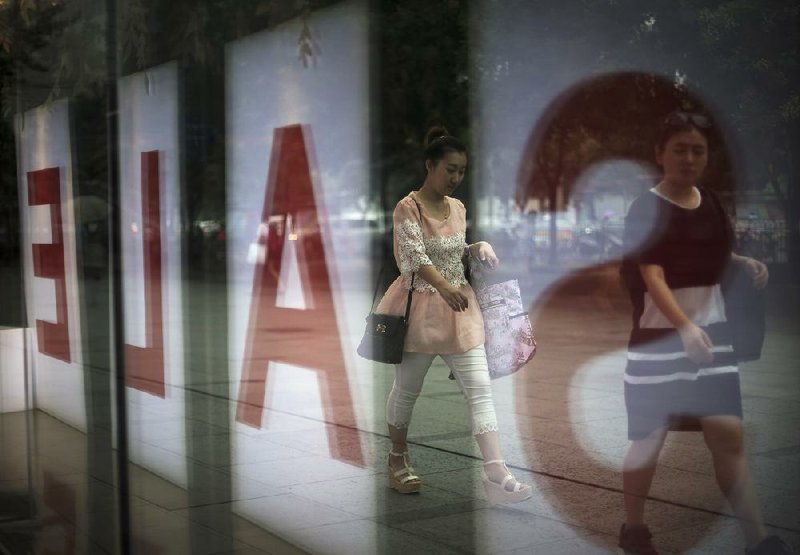BEIJING -- China's economic growth edged up in the latest quarter, and more than 7 million new jobs were created in the first half of the year, the government said Wednesday, easing pressure on communist leaders as they try to prevent a precipitous slowdown in the world's second-largest economy.
Gross domestic product rose 7.5 percent in the April-June period from a year earlier, China's Statistics Bureau said, compared with the 7.4 percent median estimate in a Bloomberg News survey of analysts. June industrial production and first-half fixed-asset investment exceeded projections.
"A lot of the June data looks quite strong, stronger than expected," said economist Julian Evans-Pritchard of Capital Economics. "I think it should vindicate policymakers' approach to targeted measures to stimulate growth."
Premier Li Keqiang's government has advanced railway spending, reduced reserve requirements for some lenders and cut taxes to protect an annual growth goal of about 7.5 percent that's under threat from a plunge in property construction and weaker home-price gains. Even with the support, analysts have forecast China is headed for the slowest full-year expansion since 1990.
"The data are quite positive," said Zhu Haibin, chief China economist at JPMorgan Chase in Hong Kong. "The government will continue to support the key sectors it is supporting now but will not expand to sectors they are not encouraging."
Industrial production rose 9.2 percent in June from a year earlier, topping the 9 percent median estimate of analysts and 8.8 percent in May. Retail sales increased 12.4 percent from a year earlier, compared with the 12.5 percent median estimate.
Fixed-asset investment excluding rural households increased 17.3 percent in the first half from a year earlier, the Statistics Bureau said. That compared with the median estimate of analysts for 17.2 percent growth.
The world's second-largest economy grew a seasonally adjusted 2 percent last quarter from the previous period, the Statistics Bureau said Wednesday, compared with the 1.8 percent median estimate of analysts and a revised 1.5 percent in the first quarter. That implies 8.2 percent growth on an annualized basis, up from 6.1 percent in the January-March period, according to data compiled by Bloomberg.
Despite the latest uptick in growth, analysts expect China's expansion to cool further over the coming year.
The International Monetary Fund expects growth to slow to 7.3 percent next year and to be below 7 percent in 2016. Some analysts expect an even deeper decline, with growth as low as 6.8 percent this year. That would be stronger than the United States, Japan or Europe, but China's weakest annual growth in two decades.
The latest data show the economy's reliance on higher government spending to offset weakness in real estate investment, a key growth driver, said Evans-Pritchard.
"We don't think this is a sign that growth is stabilizing," said Evans-Pritchard. "The stabilization has been largely a result of government stimulus measures."
Australia & New Zealand Banking Group Ltd. economists raised their 2014 growth forecast to 7.5 percent from 7.2 percent, saying fixed-asset investment gains are likely to accelerate to 18 percent in the second half.
"Further monetary policy easing across the board will be needed to reduce the downside risks facing the economy and help the Chinese authorities to deliver the 7.5 percent growth target," Liu Li-Gang, the group's chief greater China economist in Hong Kong, said in a report. High inventories of commodities including imported iron ore indicate risks to growth, Liu wrote.
Local governments are starting to ease curbs on homebuying to sustain the property industry.
A relatively healthy 7.4 million urban jobs were created in the first half of the year, according to a government spokesman, Sheng Laiyun. He said just over 3 million rural migrants moved to cities during that period to work, a sign of demand for labor.
"In the first half of the year, economic growth was stable. Employment was stable," said Sheng at a news conference.
Information for this article was contributed by Joe McDonald of The Associated Press and by Bloomberg News.
Business on 07/17/2014

